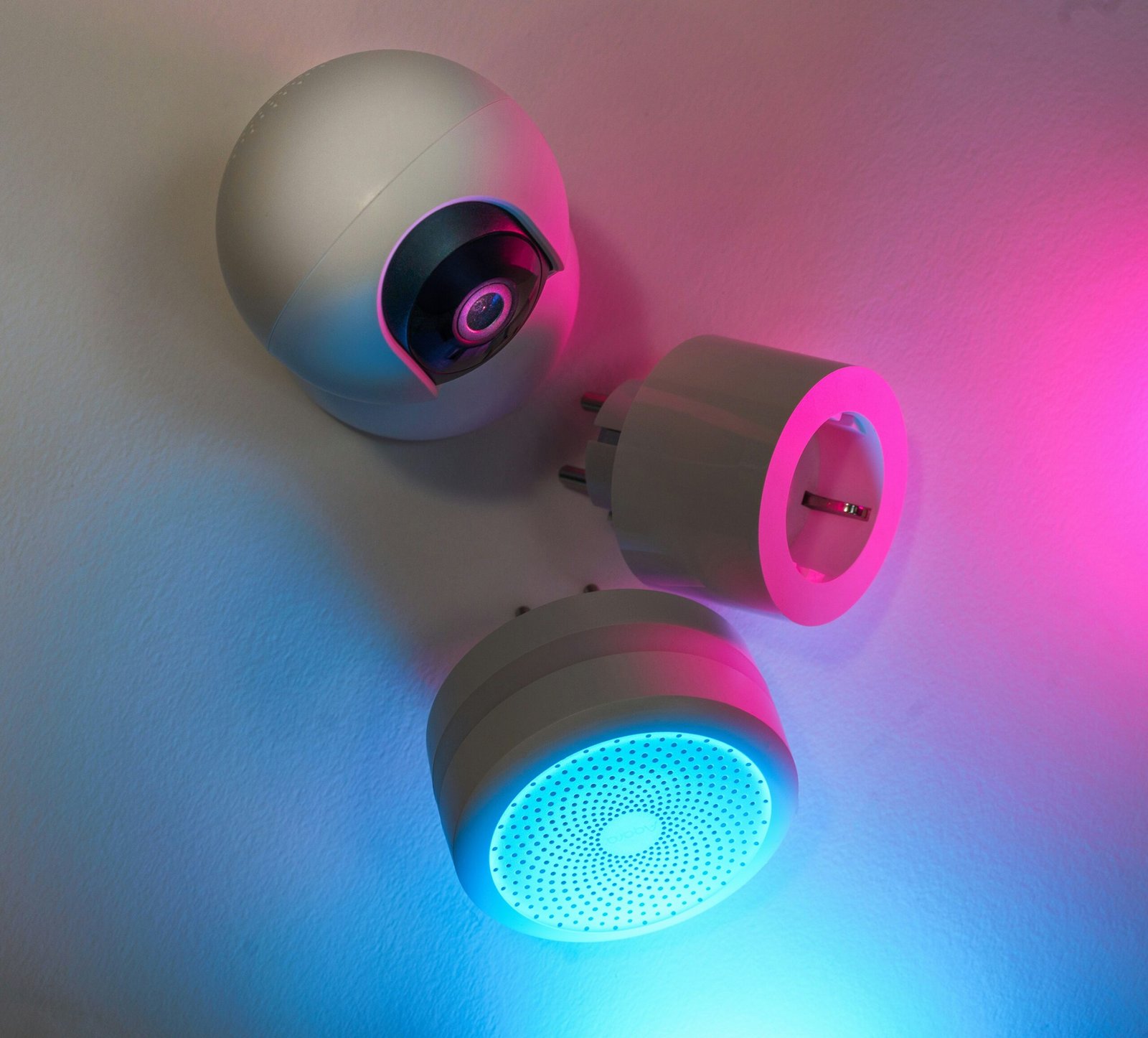
Understanding the IoT Landscape
The Internet of Things (IoT) represents a revolutionary technological paradigm that connects various devices, services, and users through the internet. This interconnected network enables communication and data exchange among physical objects, enhancing their functionality and efficiency. With the emergence of smart devices, home automation systems, and industrial sensors, the IoT landscape has become increasingly intricate and essential in today’s digital world.
The significance of IoT technology lies in its ability to transform conventional processes across various sectors. Industries such as manufacturing, healthcare, transportation, and agriculture are integrating IoT solutions to optimize operations, improve productivity, and enhance decision-making. For instance, in the healthcare sector, IoT devices can monitor patients’ vital signs in real-time, providing critical health data to medical professionals and improving patient care. This capability illustrates the profound impact IoT has on enhancing service quality and operational efficiency.
Rapid growth characterizes the IoT industry, driven by advancements in wireless communication, cloud computing, and data analytics. The proliferation of connected devices, which is projected to reach billions in the coming years, reflects the increasing reliance on IoT technology. Smart cities are emerging as a prime example of this growth, where IoT applications manage everything from energy consumption to traffic patterns, ultimately leading to sustainable urban development.
Additionally, the Internet of Things facilitates communication among diverse devices, creating a more cohesive and responsive environment. This seamless interaction allows users to monitor and control their devices remotely, resulting in enhanced convenience and improved user experiences. As IoT technology continues to evolve, its applications and relevance will expand further, indicating a future where connectivity and interactivity are at the forefront of technological advancements.
The Importance of IoT Security
The Internet of Things (IoT) is transforming the way we interact with technology, providing unparalleled convenience and connectivity. However, as the number of connected devices continues to grow, so do the security challenges associated with them. Ensuring robust security in the IoT ecosystem is critical to protect both sensitive data and the overall functionality of devices. With the proliferation of smart devices ranging from home appliances to industrial equipment, vulnerabilities are frequently exploited by malicious actors, putting personal and organizational data at risk.
One of the most pressing issues regarding IoT security is privacy. Since many devices continuously collect and transmit data, any breach can lead to the exposure of personally identifiable information. For consumers, this may result in identity theft, financial losses, and an erosion of trust in the technology they use. Similarly, businesses face significant repercussions from data breaches, including financial penalties and reputational damage, ultimately affecting their bottom line.
In addition to privacy concerns, cyberattacks on IoT devices can disrupt services, leading to operational inefficiencies. Numerous cases have demonstrated that inadequate security measures can lead to a chain reaction of failures, particularly in critical infrastructures like healthcare, transportation, and energy sectors. For example, ransomware attacks that target connected systems can halt essential services and endanger lives. Ensuring the security of these devices not only mitigates risks but also fosters consumer confidence and promotes the adoption of new technologies.
A comprehensive IoT security strategy involves implementing best practices such as regular software updates, strong password policies, and effective network segmentation. As the IoT landscape continues to evolve, prioritizing security remains an essential factor for safeguarding personal information and maintaining a stable, connected environment for all users. Only through addressing these challenges can the full potential of the Internet of Things be realized without compromising security standards.
Common Security Challenges in IoT
The Internet of Things (IoT) has revolutionized the way we interact with technology, leading to an interconnected world of devices that communicate and share data. However, this expansion opens the door to numerous security challenges that need to be addressed to protect both users and their data.
One significant challenge is the inadequacy of security protocols employed by many IoT devices. Often, manufacturers prioritize convenience and cost-effectiveness over security, leading to weak or obsolete encryption methods. This vulnerability can expose devices to malicious attacks, as security measures may not be robust enough to safeguard against threats. A prime example is the Mirai botnet attack, where poorly secured IoT devices were compromised and used to engulf large parts of the internet in a denial-of-service attack.
Additionally, the lack of standardized security measures across different devices and platforms amplifies vulnerabilities. With a myriad of manufacturers, each with their security protocols, achieving consistent security can be challenging. This fragmentation can dangerously reduce the overall security of IoT networks, as a breach in one device could grant unauthorized access to others connected to the same network.
Device authentication is another critical area of concern. Many IoT devices do not have adequate mechanisms to verify the identity of the devices that connect to them, leading to scenarios where unauthorized devices may gain access to sensitive networks. Furthermore, data transmission vulnerabilities pose further risks; unsecured communication channels can be exploited to intercept or manipulate data being exchanged between devices.
Lastly, the sheer volume of connected devices presents overwhelming challenges for security management. As the number of devices proliferates, monitoring and protecting each one becomes increasingly complex, making it easier for attackers to find exploitable weaknesses. Addressing these challenges is essential for ensuring the security and reliability of IoT environments.
Best Practices for Enhancing IoT Security
To effectively secure Internet of Things (IoT) environments, it is essential to adopt several best practices that mitigate potential vulnerabilities. One of the fundamental strategies is to ensure regular firmware updates for all connected devices. Manufacturers frequently release updates to patch identified security flaws, and without these updates, devices remain susceptible to attacks. Implementing an automated update system can significantly reduce the risk associated with outdated firmware.
Another critical aspect of IoT security is the use of strong passwords and robust authentication methods. Many IoT devices come with default passwords that are easily guessable or widely known. Users should be encouraged to change these to unique, complex passwords that include a combination of letters, numbers, and special characters. Multi-factor authentication should also be utilized where possible, providing an additional layer of security beyond just a password.
Encryption plays a vital role in protecting data transmitted between IoT devices and central systems. Implementing end-to-end encryption can prevent unauthorized access to sensitive information and ensure that data remains secure as it travels across networks. This practice is particularly important in environments where data privacy is mandated by regulations.
In addition to these practices, effective device management is crucial for maintaining IoT security. Organizations should implement strict access controls, such as limiting which users can access specific devices and monitoring device activity for any anomalies. Regular audits of all IoT devices should be conducted to ensure compliance with security policies and to identify any devices that may pose a risk due to lack of updates or inadequate protection measures. These proactive steps can collectively enhance the security posture of IoT environments and help protect against emerging threats in the digital landscape.
Role of Regulations and Standards in IoT Security
The internet of things (IoT) has witnessed rapid expansion across various sectors, introducing new possibilities alongside significant security challenges. As a response, numerous regulations and standards have been established to ensure the protection of connected devices and the data they process. These legal frameworks serve as guidelines to help organizations implement adequate security measures and achieve compliance.
One noteworthy regulation is the General Data Protection Regulation (GDPR), which applies to organizations operating within the European Union and those that handle personal data of EU residents. GDPR emphasizes the importance of data privacy and mandates that companies implement robust security practices for their IoT devices. By aligning with GDPR requirements, organizations can fortify their defenses against data breaches and unauthorized access, thereby fostering consumer trust in IoT applications.
In addition, the National Institute of Standards and Technology (NIST) has developed comprehensive guidelines that outline best practices for securing IoT devices and networks. The NIST Cybersecurity Framework offers a flexible approach, allowing organizations to assess their existing security posture and identify areas for improvement. By adhering to NIST standards, companies can better manage their cybersecurity risks and enhance the resilience of their IoT systems against emerging threats.
Moreover, various industry-specific frameworks have emerged to address the unique challenges posed by IoT security. These frameworks often incorporate baseline security requirements tailored to distinct use cases, providing a more specialized approach to compliance. By adhering to these standards, companies not only ensure regulatory compliance but also contribute to a broader culture of accountability in the industry.
In conclusion, regulations and standards play a pivotal role in shaping security practices within the internet of things (IoT) landscape. They provide essential guidelines for organizations to enhance their security measures, foster consumer confidence, and ensure compliance, ultimately paving the way for a more secure IoT environment.
The Future of IoT Security Technologies
The landscape of Internet of Things (IoT) security is continuously evolving, driven by the increasing number of devices interconnected through the network and the complexity of securing them. As threats grow more sophisticated, emerging technologies such as Artificial Intelligence (AI), blockchain, and advanced encryption techniques are poised to enhance the security measures within IoT deployments.
Artificial Intelligence (AI) has become instrumental in identifying and mitigating security threats. By analyzing vast amounts of data generated by IoT devices, AI algorithms can detect anomalous behavior indicative of security breaches. Machine learning models can adapt and learn from new threats in real-time, allowing for immediate responses to unusual activities. This proactive capability is essential in creating a resilient security infrastructure for IoT systems, where traditional methods may fall short in addressing dynamic threats.
In addition to AI, blockchain technology is gaining traction in ensuring secure transactions within the IoT sphere. Its decentralized nature promotes transparency and traceability, thereby reducing the risk of unauthorized access and data tampering. By leveraging smart contracts, IoT devices can autonomously execute transactions while ensuring that both parties involved are validated through cryptographic techniques. This method significantly improves the integrity of IoT operations and provides a trustworthy environment for data exchange and interactions.
Advanced encryption techniques are also critical in safeguarding sensitive data transmitted across IoT networks. As devices proliferate and communication channels expand, the importance of robust encryption mechanisms cannot be overstated. End-to-end encryption ensures that data remains confidential and is only accessible to authorized users. Furthermore, quantum encryption is emerging as a forward-thinking solution capable of enhancing data security against potential vulnerabilities that could arise from advances in computing technologies.
As we look to the future, the integration of these innovative technologies in IoT security frameworks will play a crucial role in protecting sensitive data and maintaining user trust in IoT applications. The continual advancement of threat detection capabilities, coupled with secure transaction processes and strong encryption, will form a comprehensive approach to enhance IoT security measures.
Building a Security-Centric Culture within Organizations
As organizations increasingly adopt the Internet of Things (IoT) technology, the necessity for a robust security-centric culture becomes paramount. A proactive approach to security is not merely a technical requirement; it is a fundamental organizational ethos that must be cultivated across all levels of the company. Employees play a critical role in ensuring the security of IoT devices and data, making it essential to embed security awareness into the organizational framework.
Training programs tailored to employees should not only focus on the technical aspects of IoT security but also address the potential threats that arise from their use. These programs must be ongoing, reflecting the rapidly evolving nature of cyber threats and the IoT landscape. Regular workshops and seminars can serve to keep employees informed about the latest security practices and promote a culture of vigilance. Developing an environment where security is everyone’s responsibility helps reduce the likelihood of human errors that can lead to significant vulnerabilities.
Additionally, organizations should implement comprehensive awareness programs aimed at educating employees about the critical importance of IoT security. These initiatives can incorporate various formats such as newsletters, webinars, and interactive platforms where employees can engage with the subject matter. Such efforts help instill a mindset focused on security across all departments, encouraging employees to not only follow security policies but also to actively participate in identifying potential risks.
Integrating clearly defined security policies and procedures into the operational framework is another essential component. These policies should be readily accessible and regularly reviewed to ensure alignment with the latest security standards and IoT protocols. By creating a structured security framework, organizations can enhance their overall resilience against potential threats, making it clear that a culture of security is foundational to their operations.
Collaboration Between Stakeholders for Enhanced Security
The security of the Internet of Things (IoT) is inherently interconnected with the collaborative efforts of various stakeholders. Manufacturers, service providers, consumers, and regulatory bodies must engage in a shared responsibility framework to enhance the overall security of IoT devices and networks. Each stakeholder plays a crucial role in addressing vulnerabilities and actively participating in the development of effective security measures.
Manufacturers hold the primary responsibility for embedding robust security features within their devices from the design phase. This means not only conducting thorough risk assessments but also adhering to best practices and industry standards. By leveraging secure coding practices and conducting regular penetration testing, manufacturers can significantly mitigate potential risks. Furthermore, they should offer timely updates and patches to address newly discovered vulnerabilities, thus ensuring that devices remain secure throughout their lifecycle.
Service providers, on the other hand, play a pivotal role in the delivery and maintenance of IoT services. They must prioritize the deployment of secure transmission protocols and enhance authentication measures to prevent unauthorized access. Collaborating with manufacturers can lead to standardized practices, fostering a secure ecosystem. Additionally, service providers should invest in educating their workforce about emerging security threats and innovations in the IoT landscape, promoting a culture of security awareness.
Consumers also play an integral part in the security landscape by adopting safe practices in their IoT usage. By being informed about potential risks and proactively managing device settings, users can help enhance their personal and collective security. Open communication channels between consumers and manufacturers can facilitate feedback, enabling manufacturers to better understand consumer concerns and adapt accordingly.
In essence, fostering a collaborative environment among manufacturers, service providers, and consumers is vital to overcoming IoT security challenges. Ongoing engagement and partnership will not only enhance security but also promote innovation and build trust within the ever-evolving IoT ecosystem.
Conclusion: Taking Action to Secure the IoT Ecosystem
As we have explored throughout this blog post, the internet of things (IoT) offers incredible opportunities for innovation and efficiency across various sectors. However, with these promises comes a considerable array of security challenges that must be addressed to protect users and data. From the vulnerabilities of interconnected devices to the potential for data breaches and cyberattacks, the risks associated with an expansive IoT landscape are significant and require immediate attention from all stakeholders.
To effectively combat these challenges, it is essential for developers, manufacturers, and consumers to adopt a proactive approach to security. This includes implementing robust encryption protocols, regular software updates, and rigorous testing of devices before their release. Moreover, users must remain vigilant by changing default credentials, monitoring their networks, and employing security tools designed to detect suspicious activities within the IoT environment.
Additionally, collaboration among industry players, regulatory bodies, and researchers is crucial in establishing comprehensive security frameworks that can adapt to the evolving nature of the internet of things (IoT). Sharing insights, best practices, and emerging technologies can lead to the development of more effective safeguards against potential threats. Education and awareness initiatives are equally important, providing users with the knowledge necessary to recognize vulnerabilities and engage in responsible device management.
The urgency to respond to IoT security challenges cannot be overstated. As the number of connected devices continues to rise, so too does the importance of a secure and resilient IoT ecosystem. By taking collective responsibility and implementing necessary security measures, stakeholders can work towards minimizing risks and ensuring a safer technological environment for all.

